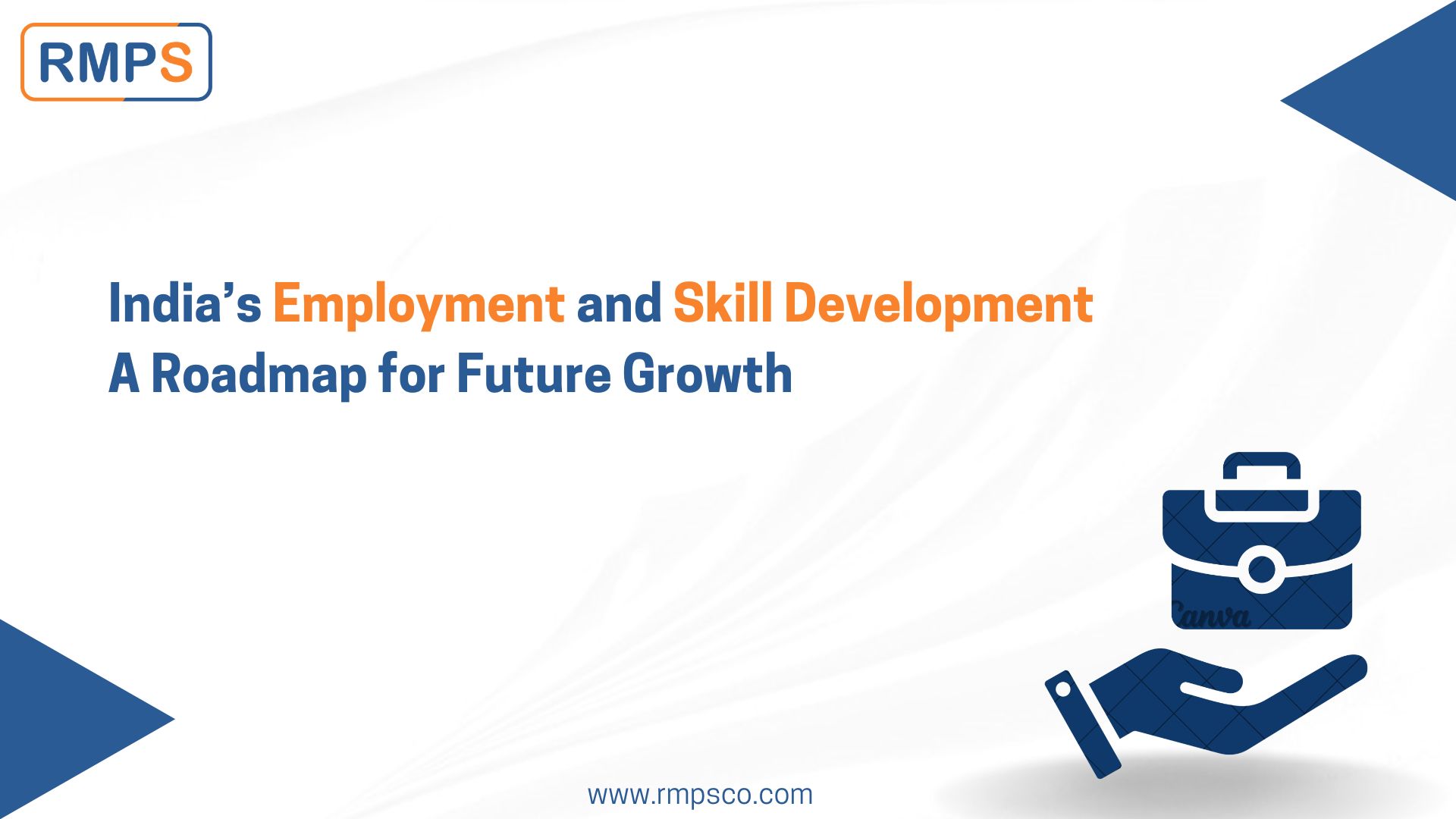
Introduction
India stands at a critical juncture where employment generation and skill development are key to harnessing its demographic dividend. With over 26% of the population in the 10-24 age group, creating quality jobs and ensuring workforce readiness are essential for sustained economic growth. The Economic Survey 2024-25 highlights declining unemployment rates, rising self-employment, and the need for skilling programs to align with global industry demands.
This blog explores employment trends, workforce participation, government initiatives, and the evolving skill development ecosystem to shape a productive and inclusive labor market.
1. Employment Trends: Positive Shifts and Growth Prospects
- India’s unemployment rate dropped from 6% in 2017-18 to 3.2% in 2023-24, reflecting economic recovery and formalization.
- Labour Force Participation Rate (LFPR) increased from 49.8% (2017-18) to 60.1% (2023-24), driven by higher female workforce participation.
- Worker Population Ratio (WPR) improved from 46.8% to 58.2%, indicating broader employment absorption.

Key Takeaways:
- Job creation has improved, but quality and sustainability of employment remain key challenges.
- Expanding opportunities in services, technology, and manufacturing is crucial for employment stability.
2. Growth of Self-Employment and Informal Sector Dynamics
- Self-employment increased from 52.2% in 2017-18 to 58.4% in 2023-24, indicating a shift towards entrepreneurship.
- Casual labor declined from 24.9% to 19.8%, while regular salaried jobs stabilized.
- Government initiatives such as PM MUDRA Yojana, Startup India, and NRLM are fueling self-employment growth.
Key Takeaways:
- Entrepreneurial growth is transforming the employment landscape.
- Formalization and social security for self-employed workers must be strengthened.
3. Women’s Workforce Participation: A Key Economic Driver
- Female Labour Force Participation Rate (FLFPR) rose from 23.3% in 2017-18 to 41.7% in 2023-24, driven by rural employment.
- Women’s self-employment in rural areas surged from 19% to 31.2%, reflecting greater entrepreneurial activity.
- Initiatives like Stand-Up India and Skill India are fostering women-led businesses.
Key Takeaways:
- Targeted skilling and financial inclusion are essential to sustaining women’s workforce participation.
- Expanding childcare support and flexible work policies can enhance female employment.
4. Sectoral Employment Trends: Where Are the Jobs?
- Agriculture remains the largest employer, with its workforce share rising from 44.1% (2017-18) to 46.1% (2023-24).
- Manufacturing sector employment declined slightly to 11.4%, while services fell to 29.7%.
- Construction, trade, and transport sectors are absorbing workers shifting from agriculture.
Key Takeaways:
- Agriculture’s dominance in employment indicates a need for rural job diversification.
- Expanding high-value services, digital economy jobs, and manufacturing can create better employment prospects.
5. Skilling and Workforce Readiness: Bridging the Gap
- India’s skill gap remains a challenge, with only 15% of the workforce formally trained.
- Government initiatives like PMKVY (Pradhan Mantri Kaushal Vikas Yojana) are providing skill-based training.
- Digital skills, AI, and automation expertise are crucial for future job roles.
Key Takeaways:
- Aligning skilling programs with industry needs will boost employability.
- Private sector partnerships can enhance the scale and effectiveness of skilling initiatives.
6. The Rise of Formalization and Payroll Growth
- EPFO net payroll additions doubled from 61 lakh (FY19) to 131 lakh (FY24), reflecting increased formal employment.
- Over 30 crore unorganized workers have been registered under the e-Shram portal for social security benefits.
- Manufacturing sector employment grew by over 7% in FY23, adding 22 lakh jobs post-pandemic.
Key Takeaways:
- Labour law reforms and compliance simplifications are fostering job creation.
- Expanding social security coverage for informal workers remains a policy priority.
7. Future Roadmap: Key Focus Areas for Employment Growth
- Enhance Job Quality and Security: Focus on formal employment and skill-linked wages.
- Strengthen Vocational Training: Bridge skill gaps through industry-led programs.
- Promote Women’s Workforce Participation: Expand financial inclusion and social support.
- Encourage Digital Economy Jobs: Invest in AI, fintech, and e-commerce training.
- Boost Rural and MSME Employment: Strengthen microfinance and rural entrepreneurship programs.
- Expand Labour Reforms and Social Security: Ensure universal coverage for all workers.
Conclusion
India’s employment landscape is witnessing positive shifts, with declining unemployment, increasing female participation, and growing self-employment. However, challenges in job quality, workforce skilling, and sectoral employment shifts require strategic interventions.
Strengthening labour policies, expanding skilling initiatives, and promoting inclusive job opportunities will be critical to leveraging India’s demographic advantage and ensuring sustainable economic growth.
LinkedIn Link : RMPS Profile
This article is only a knowledge-sharing initiative and is based on the Relevant Provisions as applicable and as per the information existing at the time of the preparation. In no event, RMPS & Co. or the Author or any other persons be liable for any direct and indirect result from this Article or any inadvertent omission of the provisions, update, etc if any.
Published on: February 1, 2025
